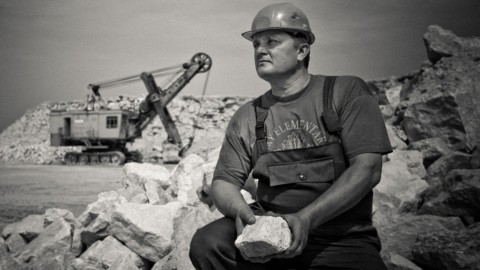The mini pension reform contained in the 2017 budget law introduces significant innovations for those who carry out strenuous jobs. In fact, this category will be allowed to access an early pension compared to the requirements set for other workers, taking advantage of the rules on quotas in force before the Fornero reform without having to wait a further period of 12-18 months (the mobile window). But let's go in order.
1. WHO ARE THE WORKERS WHO CARRY OUT USURE DUTIES?
The perimeter of strenuous work includes a series of particularly tiring activities or activities carried out at night. In particular, the list includes the duties listed in article 2 of the decree of the Ministry of Labor of 19 May 1999 (works in tunnels, quarries or mines and others); workers involved in the "chain line" (employees of companies for which the tariff items for the insurance against accidents at work managed by Inail operate); drivers of heavy vehicles, with a total capacity of no less than nine seats including the driver, used for public transport services; night workers with at least 64 nights worked per year.
Furthermore, to be included in the category, two requirements must be met at the same time:
– having carried out one or more strenuous activities for at least 7 of the last 10 years of work (it is no longer necessary to include the last one);
– having carried out one or more strenuous activities for a number of years equal to at least half of the entire working life.
2. PENSIONS: WHAT HAS CHANGED SINCE 2017 FOR USING WORK?
Since 2017, workers engaged in strenuous activities can retire 12 months earlier than last year. They will have to reach 97,6 by adding age and contribution years. The minimum requirements to retire from work are 61 years and 7 months of age and 35 years of contributions. But be careful, these are values to be considered individually (61,7+35=96,7): to reach the quorum and thus be entitled to a pension, you must be at least 61 years and 7 months of age plus 36 years of contributions ( 61,7+36=97,6), or 62 years and 7 months of age and 35 years of contributions (62,7+35=97,6).
3. PENSIONS AND DURABLE WORK: STOP ADJUSTMENTS ON LIFE EXPECTANCY
Another important novelty for those who carry out strenuous work concerns the age requirements for retirement, which from 2019 to 2027 will not be adequate for the life expectancy calculated by Istat. That is, they will remain fixed at the current values. The benefit is considerable, considering that for all the other workers the update takes place every two years and, according to estimates, will lead to an increase of 4 months in 2019 and another three months in 2021.
4. WHAT IF THE WORKERS WHO HAVE CARRIED OUT USURE TASKS ARE ALSO EARLY?
The 2017 mini pension reform also changes the requirements for early workers (those who paid at least 12 months of contributions before turning 19), who from 2017 May 41 will be allowed to retire with XNUMX years of contributions paid, regardless of age. Those who belong to both categories – that is, they are precocious and have carried out strenuous work – are free to choose between the two forms of retirement which is more favorable to them.
5. USURANTI: WHEN TO APPLY FOR EARLY PENSION?
Workers who meet the new requirements in 2017 don't have much time: by March 2018 they must submit an assessment application to demonstrate that they have carried out a strenuous or night job. For those who will accrue the requirements in 2017, the deadline is May XNUMX, XNUMX. Once the verification has been completed, INPS will invite the worker to present the actual pension application. In this regard, the Budget law provides that by March the Ministry of Labor issues a decree to simplify the necessary documentation.





